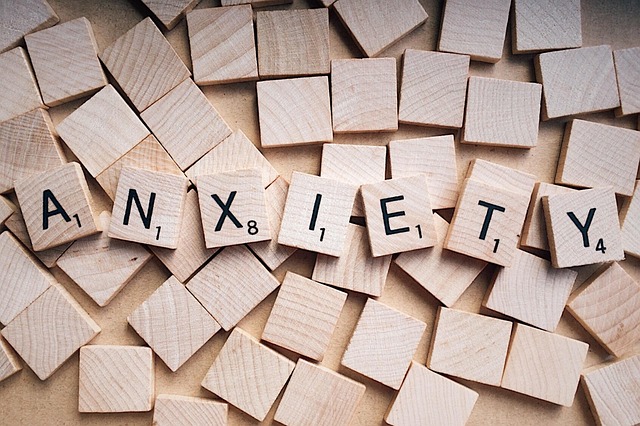Positive thinking exercises are highly effective tools in therapy for adolescent teens, empowering them with coping mechanisms and resilience to manage stress, anxiety, or trauma. These practices, such as mindfulness, affirmations, and self-talk, are also integrated into crisis intervention guidance for first responders dealing with high-stress situations, significantly improving their mental health and community outreach program outcomes. By targeting adolescents and first responders with structured sessions, these exercises cultivate optimism, resilience, and effective coping skills, contributing to long-term mental wellness and reducing burnout among healthcare providers.
Positive thinking exercises have emerged as a powerful tool in therapy for adolescent teens and first responders, helping them navigate stress, anxiety, and trauma. This article delves into the understanding, targeting, and types of these beneficial activities. We explore strategies for integrating these exercises into routines and measure their impact on mental health. By leveraging positive thinking, individuals can foster resilience, enhance coping mechanisms, and promote overall well-being, especially in challenging situations.
- Understanding Positive Thinking Exercises for Teens
- Targeting Adolescents and First Responders
- Types of Positive Thinking Activities
- Integrating and Measuring the Impact of these Exercises
Understanding Positive Thinking Exercises for Teens

Positive thinking exercises are designed to empower adolescent teens by teaching them valuable coping mechanisms and fostering resilience. These exercises play a pivotal role in therapy for young individuals, especially those who may be facing challenges related to stress, anxiety, or trauma. By incorporating practices such as mindfulness, affirmations, and positive self-talk, teens can learn to navigate difficult emotions and build a more optimistic outlook. Such interventions are particularly beneficial for first responders, who often deal with high-stress situations, and community outreach programs that aim to enhance mental well-being among adolescents.
The implementation of these exercises can be seamlessly integrated into crisis intervention guidance, offering teens practical tools to manage crises in the moment and over time. Through dedicated programs and guided practices, young people can develop healthier ways of thinking and being, which can significantly contribute to their overall stress reduction methods and long-term mental health.
Targeting Adolescents and First Responders

Targeting adolescents and first responders is a strategic approach in positive thinking exercise implementation. Adolescent teens often face unique challenges that can benefit from structured therapy sessions aimed at cultivating optimism and resilience. Through community outreach program initiatives, mental health professionals can reach this vulnerable demographic and empower them with effective coping skills development. By integrating positive thinking exercises into their routine, teens can learn to navigate stress, anxiety, and emotional turmoil more effectively.
First responders, including emergency services personnel and law enforcement officers, also face high-stress environments that can lead to mental health risks. Implementing positive thinking exercises as part of risk management planning for mental health professionals ensures these individuals have access to tools and techniques to maintain their well-being. This proactive approach not only enhances their personal lives but also improves community outreach program outcomes by fostering a more resilient and optimistic response to challenging situations.
Types of Positive Thinking Activities

Positive thinking exercises come in various forms, each tailored to different needs and preferences. For adolescent teens, activities like gratitude journaling can be transformative. By encouraging them to reflect on and write down three things they’re thankful for daily, this simple practice fosters a sense of contentment and optimism. It’s particularly beneficial for mental wellness as it helps shift focus from negative thoughts to positive experiences.
For first responders or individuals dealing with high-stress professions, mindfulness meditation is a powerful tool. This involves focusing on the present moment without judgment, which can significantly improve mood management. In fact, regular practice has been shown to reduce symptoms of anxiety and depression, enhance emotional resilience, and cultivate compassion cultivation practices. Even short sessions integrated into daily routines can make a profound difference in overall mental health and well-being.
Integrating and Measuring the Impact of these Exercises

Integrating positive thinking exercises into therapy sessions for adolescent teens and first responders can significantly impact their mental wellness. These strategies, designed to cultivate optimism and resilience, are particularly beneficial in mitigating burnout, a common challenge faced by healthcare providers. Regular practice has been shown to enhance coping mechanisms, fostering a more adaptive response to stress. By incorporating these techniques into therapeutic regimens, professionals can effectively support young individuals and those on the front lines in managing their mental health.
Measuring the impact of such exercises is crucial for evaluating their effectiveness. Therapists can employ various methods, including self-reported surveys and qualitative feedback, to assess changes in mood, stress levels, and overall well-being. Additionally, tracking attendance rates and engagement in these activities can provide insights into their popularity and potential long-term benefits. The data collected from these assessments guides therapists in refining their approach, ensuring that the exercises remain relevant and impactful, especially when tailored to specific populations like adolescent teens or first responders, as seen in Mental Wellness Podcast Series Production and Healthcare Provider Cultural Competency Training initiatives.
Positive thinking exercises have proven effective as therapeutic tools for both adolescent teens and first responders, fostering resilience and emotional well-being. By integrating various activities into their routines, individuals can cultivate a more optimistic mindset, which is crucial for navigating life’s challenges. As discussed, these exercises offer a non-intrusive approach to enhance mental fortitude, making them valuable resources in the field of therapy for adolescent teens and first responders alike. Regular practice may lead to significant improvements in overall well-being, underscoring the importance of continued research and implementation in this area.














